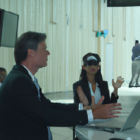In the fast-evolving world of digital marketing, AI-driven content creation is rapidly becoming a game-changer, enabling brands to generate high-quality content efficiently and effectively. With the integration of artificial intelligence in marketing strategies, businesses can now automate content generation processes, allowing for more time to focus on strategy and engagement.
The Rise of Automated Content Generation
As technology continues to advance, automated content generation has emerged as a viable solution for content marketers. Utilizing cutting-edge machine learning algorithms, AI tools can analyze vast amounts of data, identify trends, and produce relevant content at scale. This innovation not only saves precious time but also significantly reduces operational costs.
Enhancing SEO with AI-Powered Tools
AI-driven platforms like Jasper, Copy.ai, and Writesonic are revolutionizing how businesses approach SEO content writing. These platforms can generate optimized articles, blog posts, and product descriptions tailored to specific target audiences. By improving keyword integration and enhancing readability, AI tools effectively boost search engine rankings, driving organic traffic.
Benefits of AI Content Creation
- Speed: Generate quality content in a fraction of the time.
- Consistency: Maintain a coherent brand voice across all platforms.
- Personalization: Tailor content to meet the unique needs and preferences of your audience.
- Data-driven Insights: Make informed decisions based on real-time performance metrics and analytics.
The Future of Content Creation
As AI-driven content creation continues to evolve, it is essential for marketers to stay ahead of the curve. Embracing these technologies not only enhances productivity but also improves the overall quality of the content produced. In a world where consumer attention is fleeting, leveraging artificial intelligence in your content strategy could very well be the key to standing out in a crowded digital landscape.
In conclusion, the integration of AI into content creation is more than just a passing trend; it’s a fundamental shift in how we approach marketing. By adapting to these innovations, brands can unlock new opportunities for growth and engagement in their digital marketing efforts.
Stay tuned for more insights on the exciting developments in AI and marketing!











